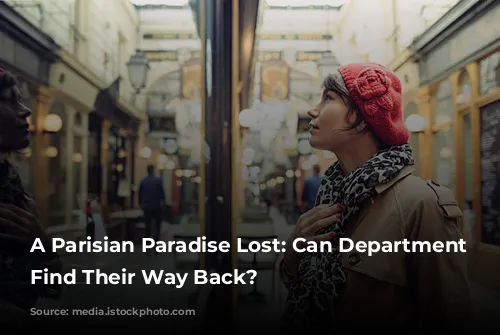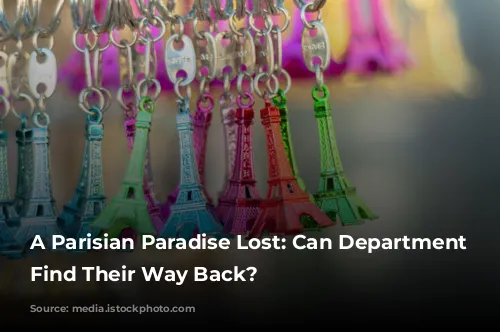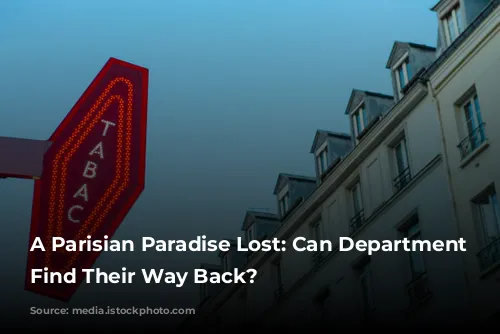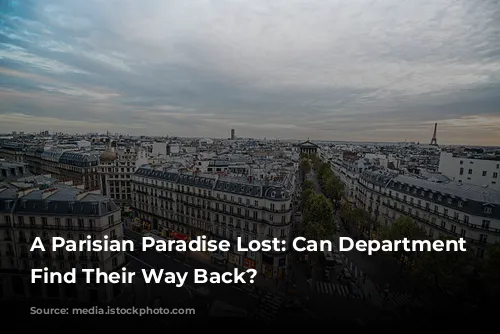La Samaritaine, a legendary Parisian department store, sits perched atop the city’s skyline. Its opulent facade and modern interior hold an alluring mystique, a testament to the grandeur of Parisian retail. But inside, an eerie quietness hangs in the air, a stark contrast to the store’s lively past. The once-thriving hub of commerce now struggles to attract customers, a reflection of the changing landscape of retail across the globe.

A World of Opulence and Innovation
La Samaritaine boasts a futuristic “beauty light bar” where glowing face masks promise youthful radiance, and an immersive Olympic retail experience showcasing grinning mascot hats. Yet, these novelties struggle to draw crowds. The store’s struggles highlight the broader crisis facing department stores worldwide.
The store’s history is deeply intertwined with the birth of modern retail. Originally opened in 1870 as a one-stop shop for everything imaginable, La Samaritaine was acquired by LVMH in 2001 and underwent a massive 16-year renovation. The result is a stunning architectural marvel with a luxurious five-star hotel, yet it seems the opulent setting is not enough to lure shoppers back.
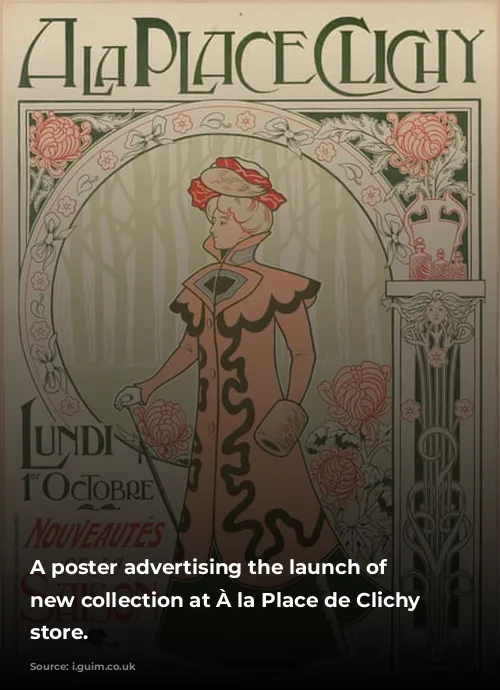
A Glimpse into Retail’s Golden Age
The story of La Samaritaine echoes the history of the grands magasins, the iconic Parisian department stores that revolutionized urban life. At the Musée des Arts Décoratifs, down the road from La Samaritaine, visitors can immerse themselves in the dazzling world of these opulent retail havens.
The exhibition showcases the sheer spectacle of these early department stores. Supersized lithographs depict sprawling interiors filled with glittering chandeliers, cascading balconies, and elaborate decorations. These “cathedrals of commerce” were designed to dazzle the newly minted bourgeoisie, providing a stage for the social elite to flaunt their wealth.

A Haven of Luxury and Leisure
The first department stores were not merely places to shop; they were destinations for leisure and social interaction. They offered a haven for women to relax and socialize away from the confines of home, a concept captured in Émile Zola’s novel “The Ladies’ Paradise”. Customers were treated as guests, welcomed with no pressure to buy.
The stores’ success stemmed from their unique ability to create an atmosphere of luxury and desire. They masterfully combined product displays, creating a captivating visual feast that inspired a yearning for ownership. These early department stores were the pioneers of brand building, promoting a particular lifestyle that resonated with the burgeoning middle class.
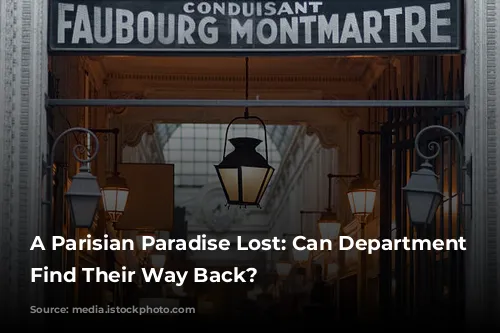
The Rise of Fast Fashion and Marketing Mastery
The exhibition reveals the evolution of retail marketing techniques. The invention of “special sales exhibitions” aimed to stimulate purchases during off-peak seasons. Monthly sales periods, fueled by advertising campaigns, became a cornerstone of the retail calendar, driving a sense of urgency and encouraging customers to stay ahead of the latest trends. This marked the dawn of fast fashion, with the rapid production and distribution of trendy items, mirroring today’s world of disposable fashion.
The department store also pioneered mail-order catalogues, making shopping accessible to a wider audience. Beautiful examples of early catalogues, featuring intricate illustrations of various goods, are on display at the museum. These catalogues, predecessors to today’s online shopping, were a testament to the growing power of visual merchandising and the expansion of retail beyond physical spaces.

A Reflection on Consumption and its Consequences
The exhibition paints a vivid picture of the birth of consumerism, a phenomenon that has shaped our world in profound ways. It highlights the evolution of marketing methods, the rise of fast fashion, and the increasing emphasis on acquiring “more stuff”.
However, it also prompts a sobering reflection on the environmental and social consequences of unchecked consumption. The exhibition’s exploration of the history of advertising targeted at children, alongside the rise of landfill sites and exploitative supply chains, exposes the dark side of our insatiable appetite for products.

A New Era for Urban Spaces?
The current struggles of department stores raise questions about the future of these iconic spaces. Will they fade into oblivion, victims of the digital age, or can they reinvent themselves? Perhaps, as we become increasingly aware of the environmental and social impact of overconsumption, we can reimagine these grand structures as spaces for learning, creativity, and community, providing an alternative to the relentless pursuit of material goods. Just as libraries have found a renewed purpose in modern society, perhaps the department store can evolve into a new kind of urban haven, a place to connect, learn, and grow.
